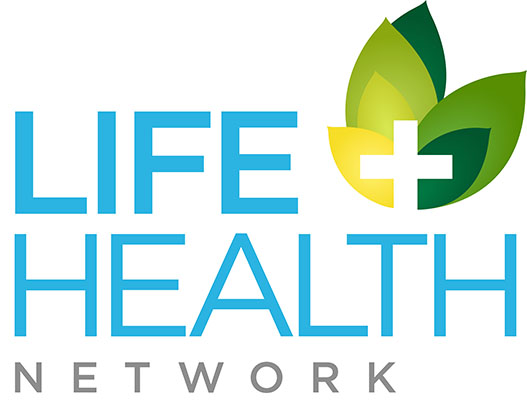The NPR blog “the salt” recently published an article concerning the types of food people typically donate to food shelves. They note that people who donate to food drives often do not consider the nutrition or usefulness of the foods they donate. The article recounts the experience of one volunteer whose grandmother received a food box filled with ramen, marshmallows, a container of Crisco and a few other items. Then a pertinent question was asked, “What would she even make with this?”1
I can relate to this in some way. In elementary school, I remember asking my busy mother at the last minute for something to bring to the food drives at school. What do you expect she gave me? When I got to school, I remember seeing a lot of cans of beans (green, baked, refried) and corn surrounded by a few boxes of graham crackers, Pop Tarts, or Betty Crocker cake mixes. I put my box of Rice-A-Roni on top.
In high school, I also recall volunteering at the food shelf with my church’s youth group. Even then, when I couldn’t have cared less about health, I could easily recognize the lack of variety. Another problem is awareness, although there are many foods that are shelf stable and healthy, most people tend to equate shelf stable with processed foods in boxes. If it has a lot of preservatives it won’t go bad right?
In 2013, 1 in 7 Americans visited a food shelf, so there is definitely a big need.2 With this in mind, we at Life and Health have come up with a list of things to donate to a food shelf. These items are not only healthy, but they are foods people can actually cook with and create appetizing meals for their families (instead of yet another box of mac and cheese):
- Whole grain noodles
- Brown rice
- Quinoa
- Oatmeal (not the instant flavored packets which have too much sugar)
- Cereals with low sugar content
- Nuts
- Peanut or almond butter
- Beans (canned is preferred because most people don’t know how to prepare dried beans)
- Canned fruit packed in juice (not syrup)
- Canned veggies (low sodium)
- Dried fruit
- Pasta sauce
- Tomato paste
- Canned soup (low sodium)
- Shelf stable soy or almond milk.
- Baby formula
- Healthy cooking oils
- Spices (you need to have something to flavor your food)
Note: Although Life and Health advocates a plant-based diet, I’d like to make the point. Meats such as canned tuna or salmon are much healthier donations than spam or hotdogs.
In addition to the above mentioned food items. Items such as toiletries cannot be purchased with food stamps and are in high demand:
- Diapers (in a variety of sizes)
- Wet wipes
- Soap
- Shampoo
- Toothpaste
- Deodorant
- Feminine Products
Finally, most food shelves accept monetary donations and often use the money to stock up on the items they need most. Some also use the money to buy fresh fruits and vegetables as well as items such as fresh eggs (oftentimes at discounted prices). So this is also an option if you are not sure what to donate.
Things to Consider When Choosing Foods
Now that you’ve seen the list of foods, here are a few more things to keep in mind. While it may be tempting to buy a bulk bag of rice or flour, most food shelves do not want bulk foods. It is a problem because they do not have the facilities to repackage the food into smaller portions. Cans are also preferred to glass as they do not break easily. If you have the option, choose a canned product. Ethnic foods are also greatly appreciated. The exact type will obviously depend on the ethnic groups living in your area.
Although our list is largely vegetarian, consider going out of the way to donate vegetarian versions of foods such as beans (many contain pork). This is not only a service to people on a plant-based diet, but it is sensitive to the religious dietary restrictions of several faiths. I’m also sure there are many people who would appreciate foods that are Kosher or Halal.
Nutrition Education and Learning to Cook
Getting healthy foods to food shelves is one thing, but food availability is not the only problem disadvantaged Americans are facing. Knowing how to cook and use healthy foods is equally important. Unfortunately, home cooking is becoming somewhat of a forgotten art. In an ideal world, every food shelf would give out recipes or even hold cooking classes. For now, people will have to look to other sources of information.
This is where we at Life and Health come in. On our website, you will find a bounty of video cooking demonstrations. Our recipes are healthy, easy to prepare, and taste great. Please use these recipes (and video demonstrations) yourselves and share them with others. We even have cooking 101 videos showing how you can chop or dice fresh produce like a professional chef. Although some of the ingredients may not be available at food shelves, the majority of them will.
You may also be interested in our article “SNAP, Eating Healthy for Less”. The article focuses on how to eat healthy while on a limited budget. It was written with food stamps (SNAP) in mind, but the principles are useful for anyone. You may also be interested in our article “5 Tips to Shop Healthy and Save Money“.
Good luck on your healthier cooking and donating!
References:
[1] Godoy, Maria. “For The Next Food Drive, Go For The Canned Tuna, Not The Saltines.” NPR.org. Accessed December 9, 2014. http://www.npr.org/blogs/thesalt/2014/11/24/366300894/for-the-next-food-drive-go-for-the-canned-tuna-not-the-saltines. [2] Ibid.
